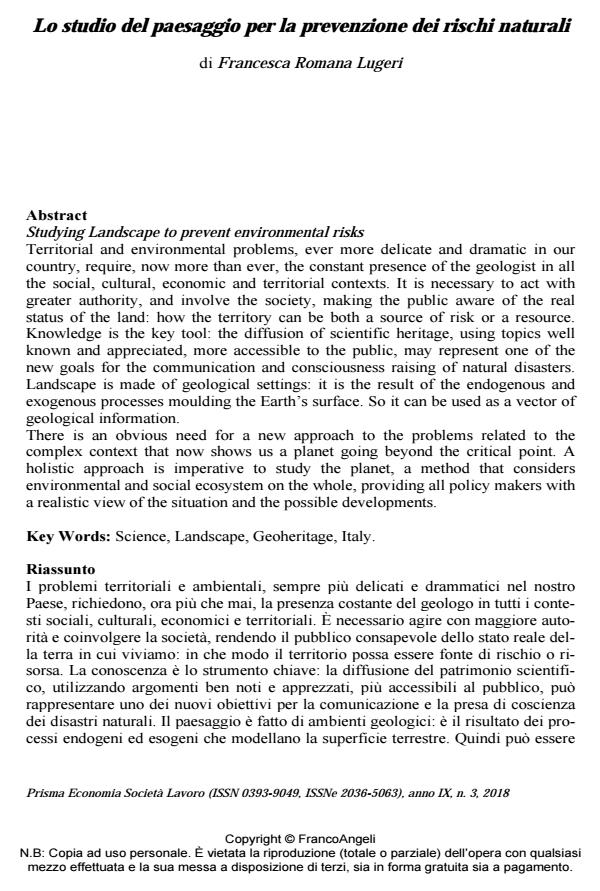Studying Landscape to prevent environmental risks
Journal title PRISMA Economia - Società - Lavoro
Author/s Francesca Romana Lugeri
Publishing Year 2019 Issue 2018/3
Language Italian Pages 16 P. 97-112 File size 215 KB
DOI 10.3280/PRI2018-003007
DOI is like a bar code for intellectual property: to have more infomation
click here
Below, you can see the article first page
If you want to buy this article in PDF format, you can do it, following the instructions to buy download credits

FrancoAngeli is member of Publishers International Linking Association, Inc (PILA), a not-for-profit association which run the CrossRef service enabling links to and from online scholarly content.
Territorial and environmental problems, ever more delicate and dramatic in our country, require, now more than ever, the constant presence of the geologist in all the social, cultural, economic and territorial contexts. It is necessary to act with greater authority, and involve the society, making the public aware of the real status of the land: how the territory can be both a source of risk or a resource. Knowledge is the key tool: the diffusion of scientific heritage, using topics well known and appreciated, more accessible to the public, may represent one of the new goals for the communication and consciousness raising of natural disasters. Landscape is made of geological settings: it is the result of the endogenous and exogenous processes moulding the Earth’s surface. So it can be used as a vector of geological information. There is an obvious need for a new approach to the problems related to the complex context that now shows us a planet going beyond the critical point. A holistic approach is imperative to study the planet, a method that considers environmental and social ecosystem on the whole, providing all policy makers with a realistic view of the situation and the possible developments.
Keywords: Science, Landscape, Geoheritage, Italy.
Francesca Romana Lugeri, Lo studio del paesaggio per la prevenzione dei rischi naturali in "PRISMA Economia - Società - Lavoro" 3/2018, pp 97-112, DOI: 10.3280/PRI2018-003007